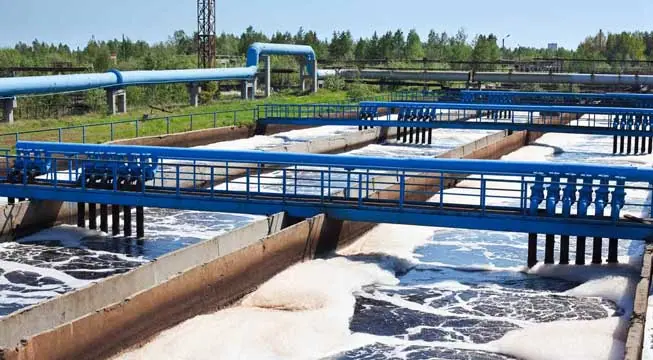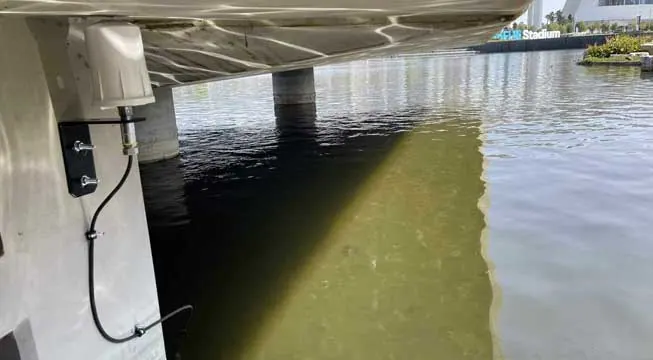
Get in Touch With Us and Tell Us About Your Toughest Monitoring and Control Challenges.
SignalFire Telemetry products connect you with crucial product and hardware data at any of your oil and gas operation sites—whether it’s a pump, pipeline, or storage tank.

SignalFire Telemetry devices install anywhere water asset monitoring is needed, whether it’s for collection purposes, treatment, or delivery.

SignalFire Telemetry devices can monitor key assets and can do it affordably, without any renovation or high-priced engineering costs. They install easily with no required cable or additional power. The data is available on your phone or computer and the cloud service can even output to your corporate system to integrate with the rest of your data and keep your operation running.

SignalFire Telemetry devices can monitor and manage water supplies and additives throughout the property, helping you avoid catastrophic shortages and keep your irrigation plan on track.

Avoid costly product loss in bulk storage tanks, terminals, and transportation movements. Whether calling for tank levels, gauge pressure, or even movement pumps or pipelines, SignalFire products can fill any monitoring gap throughout a facility.

Environmental fines for businesses are frustrating and can bring business to a standstill until they’re worked out. No business wants to hurt the environment, and in competitive markets stopping production affects the bottom line and staff. But there are effective and affordable solutions with SignalFire Telemetry devices.

Expand visibility and control of your refinery or petrochemical processing facility without expensive renovations or redesigns. And do it with your current gauges and hardware. SignalFire telemetry devices are designed to work in harsh chemical environments and meet the strictest safety and security standards

No matter the size of your service map, monitoring remote assets ensures efficiency and keeps your operation in compliance. That’s how SignalFire devices can really help, offering the most affordable and effective monitoring solution that will monitor liquid, gas, electricity, and other assets.

Explore the diverse applications of SignalFire Wireless Telemetry Systems across different industries.

Access our latest brochures to explore comprehensive information about our products and services.

Easily find the sensors that are compatible with our systems on this dedicated page.

Explore a comprehensive collection of images showcasing our products, installations, and real-world applications.


When first introduced to the industry, remote instrumentation was based on wired systems. Today, wireless remote monitoring and control systems can simulate the architecture of wired systems using links to transmit data. Offering substantial operating and cost advantages over wired systems, wireless systems are becoming more prevalent in different applications. Here are five reasons why:
A wired system may require thousands of yards of cable to connect to different endpoints. As installed costs fluctuate from $10 to $20 per foot, a wired system can be expensive if connections are thousands of feet away. Powered by battery, solar, local power, or a power-scavenging device, wireless systems have no conduit requirements, eliminating the need for hardwiring instrumentation.
While a wired system using 50 to 75 feet of installed conduit can cost as much as $1500, a comparable wireless system can costs just a few hundred dollars per measured point, depending on vendor and application specifications. If repaired or reconfigured, a wired system can require new cables, involving trenching, hardware and labor. A wireless system is easily scaled without adding new hardware. After initial installation, wireless systems can easily add new wireless instruments to meet changing and expanded requirements. In addition, a wireless system can be configured in the shop, reducing on-site labor by 50% to 75%.
In some cases, wires can’t run on property not owned by the company such as roads, streams or other structures. The industrial transceiver nodes of a wireless remote monitoring system provide powerful, long-range transmission of data in the unlicensed ISM bands that sustains signal strength through terrain, structures, or weather. Even when operating in hostile and dangerous environments, a wireless system can operate unattended for years without being affected by environmental conditions such as snow, rain, dust storms and ice.
Should a wired system fail due to cut wires, corrosion, dirt or another adverse condition, operators are not alerted to the problem, resulting in sub-par operations or failures until instrumentation is back online. Programmed with a communications link alarm, a wireless system provides an alert when data is not in transmission. Most problems are avoidable by preventative maintenance linked to wireless diagnostics.
Wireless remote monitoring systems with an open architect allow users to integrate many types of sensors to monitor assets. As a result, a variety of sensors can be added or subtracted as needed to measure parameters such as pressure, temperature, level and flow. Users can choose the best sensor for each application and bring all that data from different sensors to a single point with a single data interface. In addition, robust gateways can accommodate up to 10,000 transceiver nodes, enabling the network to cover a geographic range of hundreds of square miles.
More cost effective and versatile than traditional manual gauges and wired instrumentation, wireless control systems meet different challenges that wired systems just can’t address. Read about the rationale for investing in a wireless tank level system by downloading the article Justifying the Move to Wireless Tank Level Monitoring.
Get in Touch With Us and Tell Us About Your Toughest Monitoring and Control Challenges.





"*" indicates required fields